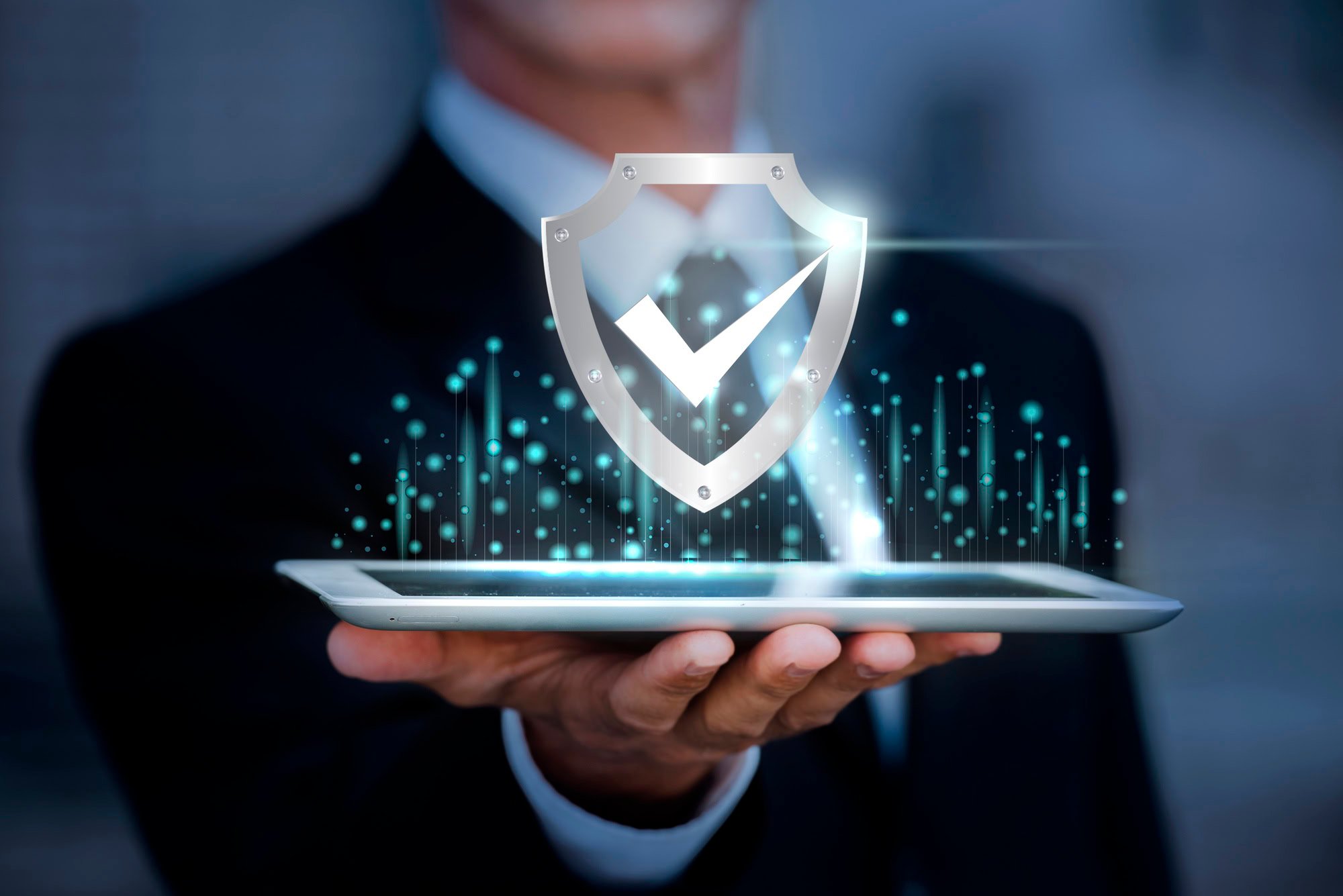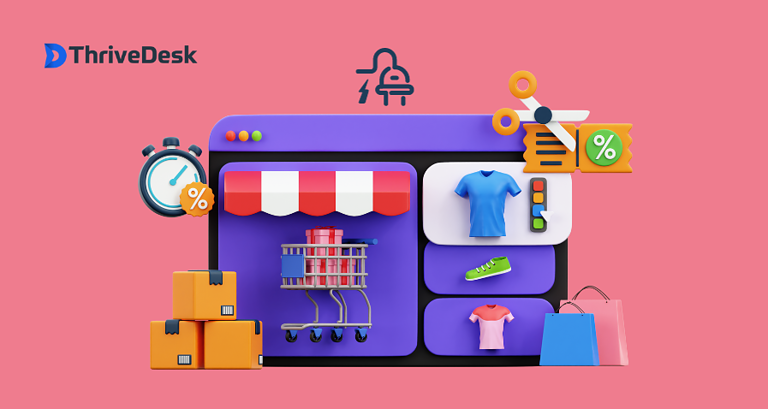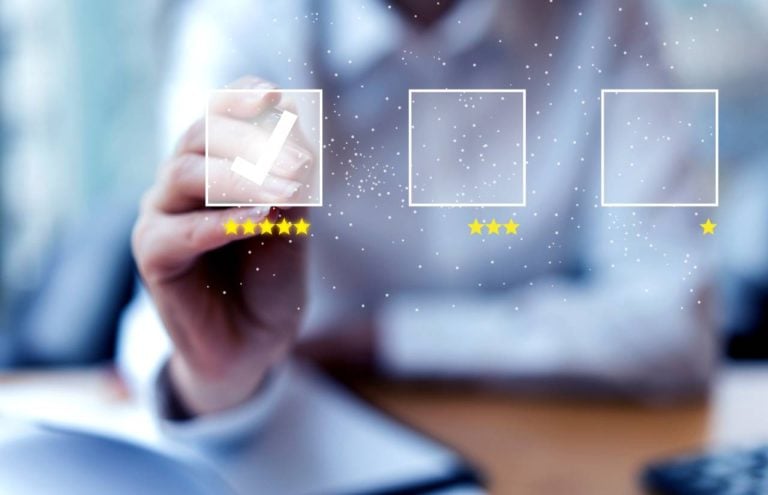Security breaches can devastate organizations financially and reputationally. With increasingly sophisticated cyber threats, safeguarding your Software as a Service (SaaS) applications is essential for any business.
Studies show that 43% of cyber attacks target small businesses, making robust security measures non-negotiable.
Understanding your SaaS application’s specific security requirements is the starting point. Every SaaS solution has unique vulnerabilities and needs tailored protections.
For instance, implementing multi-factor authentication (MFA) greatly enhances security, as does the use of helpdesk software like ThriveDesk to track security issues effectively.
In this article, we will explore key security measures necessary to protect your SaaS applications. From encryption of data in transit and at rest to employing AI for threat detection, we will cover essential strategies.
Join us as we dive deep into safeguarding your digital assets and ensuring peace of mind.
Table of Contents
Identify your SaaS application’s specific security requirements
To identify your SaaS application’s specific security needs, begin with access control. Implement role-based access control (RBAC) and zero trust policies. These strategies manage user access effectively.
Ensure proper configuration and upgrades for your tools. Misconfigurations are common security issues per OWASP. Regular checkups reduce vulnerability significantly.
End-to-end encryption is non-negotiable for data safety. Encrypt all data to prevent unauthorized access. Security here is a team effort between client and provider.
Regular monitoring and logging are crucial. Detect malicious activity swiftly with timely audit logs. Neglecting this can lead to severe risks.
Here’s a quick checklist:
- Implement RBAC and zero trust policies.
- Configure tools correctly and update regularly.
- Encrypt all data end-to-end.
- Monitor systems consistently.
- Collaborate with your SaaS provider.
For robust SaaS security, trust in offerings like ThriveDesk. Their helpdesk software is a great example, ensuring data safety with exceptional security features.
Here’s a table summarizing key actions:
| Key Actions | Importance |
|---|---|
| RBAC & Zero Trust | Control user access effectively |
| Proper Configuration | Minimize security issues |
| Data Encryption | Prevent unauthorized access |
| Regular Monitoring | Detect suspicious activities |
| Provider Collaboration | Shared security responsibility |
Implement robust authentication mechanisms
Strong authentication mechanisms are essential for SaaS security. Implementing Multi-Factor Authentication (MFA) reduces unauthorized access risks significantly. Users must verify their identity using two or more factors.
A modern password policy enhances user authentication security. This involves banning weak passwords and enforcing complexity rules. Such measures prevent common credential-based attacks effectively.
Identity Access Management (IAM) tools play a vital role. They manage user identities and access levels securely. Only authorized individuals access sensitive data in SaaS platforms.
A combination of Active Control (AC) and Single Sign-On (SSO) strengthens security. It provides a solid foundation for authentication and access control. This approach cuts risks of illegitimate intrusions effectively.
| Authentication Method | Reduction in Risk |
|---|---|
| Multi-Factor Authentication | 70% |
| Single Sign-On (SSO) | 50% |
| Strong Password Policy | 40% |
Establish identity access management (IAM) policies
Establishing robust IAM policies is crucial for SaaS security. Strong authentication verifies user identity before app access.
IAM solutions help control access, limiting it to necessary resources. Reviewing and updating user permissions regularly maintains security balance.
Automating IAM controls streamlines user access based on multiple factors like location and device security.
Key IAM Practices:
- Strong Authentication Protocols: Ensure verified user access.
- Regular Permission Reviews: Keep access aligned with roles.
- Automation: Adjust rights efficiently as needed.
IAM policies help prevent unauthorized access, reducing data breach risks. Compliance with privacy regulations is also reinforced. According to Gartner, 85% of organizations with robust IAM policies see fewer security incidents.
| IAM Practice | Benefit |
|---|---|
| Strong Authentication | Verified, secure user access |
| Automated Controls | Efficient, contextual access adjustments |
| Regular Reviews | Balanced security and user access rights |
Consider exploring software like ThriveDesk for implementing effective IAM strategies. Stay proactive in addressing potential vulnerabilities and safeguarding user data.
Embrace IAM policies to enhance your SaaS security posture today!
Encrypt data in transit
Encrypting data in transit is vital for SaaS security. Data encryption converts information into a coded form.
This ensures that unauthorized individuals cannot read it. Using encryption like TLS helps protect data over HTTP or FTP. Data is then safe against interception.
Consider a list of encryption practices:
- Use TLS for data transfer over HTTP.
- Employ VPNs for secure remote access.
- Encrypt data both in transit and at rest.
A VPN for accessing SaaS services securely encrypts data. It shields information while being accessed from various locations.
This adds an extra layer of security, reducing potential risks. Encryption practices ensure strong security measures and safeguard sensitive data.
Encrypt data at rest
Encrypting data at rest is crucial for security. Use strong protocols like AES for protection. This ensures data integrity and confidentiality are maintained.
Customers should control their encryption keys. This prevents unauthorized access by cloud staff. Regularly update and check your encryption status.
This minimizes potential security breaches effectively.
Here’s a simple table for reference:
| Encryption Feature | Importance |
|---|---|
| Strong Protocols (like AES) | High data integrity |
| Customer Control of Keys | Prevents unauthorized access |
| Regular Updates | Reduces security risks |
Consider these best practices for solid security posture:
- Use encryption protocols proactively.
- Ensure encryption keys are client-controlled.
- Regularly audit encryption features.
Statistics show that only 40% of the companies use strong encryption. Implementing these best practices can safeguard sensitive data significantly. Stay updated with security measures for comprehensive protection.
Utilize Data Loss Prevention (DLP) solutions
Utilizing Data Loss Prevention (DLP) solutions is essential. These solutions protect sensitive data effectively. They monitor and control data transfers diligently.
An effective DLP solution enforces strict security policies. It detects potential breaches and prevents data exfiltration.
Robust DLP solutions use advanced technologies like data encryption. They implement user access control and content inspection.
This helps identify, classify, and protect sensitive information. DLP measures are customizable to organizational needs. They focus on sensitive data like customer data or intellectual property.
Integrating DLP policies with SaaS applications is crucial. This ensures data protection from unauthorized sharing. It reduces the risk of data breaches significantly.
Key DLP Features
| Feature | Purpose |
|---|---|
| Data Encryption | Protects data in transit |
| User Access Control | Limits access to authorized users |
| Content Inspection | Detects and classifies data |
Monitor your SaaS environment for anomalous user behavior
Monitoring your SaaS environment is crucial. Key to this is detecting anomalous user behavior. Such monitoring guards against unauthorized access and potential threats.
Implement user activity logs and SIEM systems. These tools help flag suspicious activities swiftly. Continuous monitoring with these systems provides a strong security posture.
Behavioral analytics tools enhance security measures. They automatically identify odd user activities. This helps distinguish normal actions from security risks.
Behavioral Benchmarks and Monitoring Tools
| Feature | Benefit |
|---|---|
| User Activity Logs | Tracks all user actions |
| SIEM Systems | Quick response to unauthorized activities |
| Behavioral Analytics | Automated anomaly detection |
| Anomaly Detection Systems | Proactive threat identification |
Regular audits are essential for thorough security checks. They ensure access controls maintain integrity. Layer these security strategies for better protection.
Conduct regular security audits
Regular security audits are crucial for SaaS security. They help identify vulnerabilities early.
Comprehensive audits should cover data encryption, API security, and third-party integrations. These checks ensure compliance with data protection regulations.
Conduct audits at regular intervals to stay proactive. This helps catch minor issues and prevent major threats.
A structured process reveals potential risks in SaaS solutions. This strategy strengthens your security posture significantly.
Here’s a quick checklist for your next audit:
- Review data encryption methods.
- Evaluate API security.
- Inspect third-party integrations.
- Verify compliance with regulations.
Regular audits build a solid security foundation. They maintain the integrity and confidentiality of your data. This trust extends to customers and stakeholders alike.
Remember, the security team plays a vital role here. Their expertise fortifies your defense against potential breaches. Regular audits are not just necessary but essential for peace of mind.
Ensure compliance with relevant regulations
Ensuring compliance with relevant regulations is vital for SaaS security.
Compliance management tools assist organizations in meeting standards like PCI DSS, HIPAA, and SOC 2. These tools are essential for maintaining strong security posture and data protection.
A comprehensive SaaS security policy must include regulatory compliance as a foundational element.
Regular security audits help assess application security and ensure adherence to regulations. Compliance not only boosts security, but also aligns with data protection laws like GDPR and HIPAA.
Regular updates of data access policies are crucial. These updates ensure alignment with evolving regulatory and business environments. Constant review maintains compliance and minimizes potential security breaches.
SaaS applications that prioritize compliance see reduced risks and improved customer trust.
Key compliance practices include:
- Conducting regular security audits
- Adhering to PCI DSS, HIPAA, and SOC 2
- Regularly updating data access policies
Leverage AI for threat detection
Harnessing AI for threat detection can revolutionize SaaS security. AI analyzes vast data sets, spotting anomalies indicative of threats.
This proactive approach helps detect and mitigate issues early. Organizations can outpace potential breaches with these capabilities.
AI-driven security solutions constantly learn and adapt. They become more effective over time, recognizing patterns and predicting risks.
Continual learning means improved threat detection for evolving security needs.
Integrating AI in security systems offers real-time defenses against cyber threats.
For instance, Microsoft’s Copilot for Security uses AI to boost incident response times. Identifying suspicious activities quicker can prevent potential breaches.
| Benefits of AI in Threat Detection |
|---|
| Analyzes vast data efficiently |
| Detects threats in real-time |
| Learns and adapts continuously |
Using AI in SaaS security allows for faster threat response and enhanced safety measures.
For more insights, visit ThriveDesk Blog. AI is key in maintaining a comprehensive security strategy today.
Employ Cloud Access Security Broker (CASB) solutions
Cloud Access Security Brokers (CASBs) add essential security layers. They work as policy enforcement centers for SaaS tools. Functions include access control, monitoring, and encryption.
CASB solutions offer centralized visibility across cloud applications. They allow organizations to monitor activity. Detection of anomalous behavior and enforcement of security policies become streamlined.
Deploying a CASB tool enhances the SaaS security model. Organizations get controls beyond what SaaS providers offer. This protection is essential against unauthorized access and data breaches.
Implementing CASBs boosts security compliance across platforms. They help manage shadow IT and potential breaches. This simplified scaling ensures security strategies are robust.
Benefits of CASB Solutions:
| Benefit | Description |
|---|---|
| Enhanced Visibility | Centralized monitoring of user activity. |
| Data Security Policies | Enforces and strengthens security measures. |
| Unauthorized Access | Detects and prevents potential unauthorized access. |
CASBs are vital for robust SaaS deployments. They improve security posture and ease compliance. For example, ThriveDesk integrates CASBs for enhanced security.
Further Reading:
- Understanding CASB Solutions
- SaaS Security Best Practices
Using CASBs ensures a secured SaaS environment. Start securing your SaaS apps today!
Educate employees on security awareness
Educating employees on security awareness is vital. Human error leads to many security breaches. Regular training sessions help reduce this risk.
Employees must know the latest security best practices. This knowledge helps them recognize potential security risks.
Conduct simulated phishing exercises to boost awareness. These exercises create a security-conscious culture. Employees learn to mitigate threats effectively.
They become proactive in identifying suspicious activities. Prioritizing cybersecurity awareness fills gaps left by technology alone.
Here’s a quick breakdown:
| Key Steps | Benefits |
|---|---|
| Conduct phishing tests | Builds a culture of awareness |
| Regular security training | Reduces human error in security |
| Promote cybersecurity | Enhances overall security posture |
Training programs greatly enhance employee knowledge. They help protect against potential security breaches. A strong security posture arises from informed employees.
Organizations must prioritize continuous employee education. This approach safeguards against many potential vulnerabilities.
Assess third-party vendor risks
Assessing third-party vendor risks is essential in SaaS security. Third-party providers often access SaaS systems.
If their security measures are lacking, data breaches can happen easily. This risk grows when multiple vendors are involved. Each vendor brings potential vulnerabilities.
Reliance on SaaS vendors is a double-edged sword. If a vendor doesn’t maintain high security, clients suffer.
It’s crucial to ensure vendors uphold robust security standards. Shared responsibility complicates managing security risks.
The integration of third-party services introduces additional risks. Many vulnerabilities can be overlooked. It requires a keen eye on defense gaps. Close scrutiny helps maintain a strong security strategy.
Regulatory compliance becomes tricky with multiple SaaS vendors. Legal and industry standards vary and require careful attention. Regular audits and comprehensive evaluations are key.
Consider a simple checklist for assessing third-party risks:
- Check vendor’s security measures.
- Ensure vendor compliance with regulations.
- Verify vendor’s incident response plans.
Implement multi-factor authentication (MFA)
Multi-Factor Authentication (MFA) enhances security in SaaS applications. It adds a crucial layer by requiring multiple verification factors. Even if passwords are compromised, access remains secure.
MFA involves identification forms like text codes or biometrics. These methods make unauthorized access significantly harder. Businesses must update and review permissions frequently.
Implementing MFA in SaaS apps boosts overall security measures. Organizations gain dynamic access controls, adjusting access based on context. Access is granted only if secure conditions are met.
Here’s a simple look at MFA benefits:
| Benefit | Description |
|---|---|
| Additional Security | Requires multiple verification, reducing unauthorized access risks. |
| Identifications Forms | Uses text codes, biometrics, or both for robust protection. |
| Dynamic Controls | Access adjusts dynamically, enhancing security posture. |
For effective SaaS security practices, consider ThriveDesk helpdesk software. They implement solid MFA and security measures, offering higher peace of mind for their users.
Use secure application programming interfaces (APIs)
Secure APIs are crucial for protecting sensitive data. They determine how SaaS apps interact with other software. Poorly secured APIs can lead to data breaches.
Attackers might exploit vulnerabilities, causing significant harm.
Insecure APIs expose critical data and functions. This makes them prime targets for cyber threats. Misconfigured APIs can result in data leaks.
Such issues jeopardize the trust customers place in SaaS solutions.
Implementing robust API security measures is vital. Follow a security framework to prevent unauthorized access. Adhering to best practices helps mitigate potential breaches. This ensures the safety of customer data.
Here’s a simple list of API security best practices:
- Use strong authentication methods.
- Encrypt data during transmission.
- Regularly audit and update API security controls.
API Security Statistics Table
| Aspect | Statistics |
|---|---|
| Potential Data Breaches | Up to 50% involve APIs |
| Secure APIs Usage | 90% of SaaS providers |
| Misconfiguration Incidents | 53% of security issues |
Regularly update and patch your SaaS applications
Regularly updating and patching SaaS applications is crucial. Cybercriminals often target outdated software for exploitation.
Automated patch management can streamline updates effectively. It ensures timely updates without disrupting workflows.
Schedule regular updates to protect against vulnerabilities. This helps reduce exploitation risks. Cyber threats adapt quickly, and so should your defenses.
A proactive update strategy minimizes potential security breaches.
Review the security features of your SaaS applications. Identifying potential risks is necessary. Ensure only approved and secure applications are used.
Consistent evaluations bolster your security posture.
Consider implementing a structured update process. It should include regular assessments and reviews. Keeping apps updated guards against known vulnerabilities.
Here’s a simple table to guide your update strategy:
| Action | Frequency | Benefit |
|---|---|---|
| Schedule updates | Bi-weekly | Mitigate known vulnerabilities |
| Automate patch management | Continuously | Avoid workflow disruptions |
| Security features review | Quarterly | Ensure only approved apps are utilized |
Establish an incident response plan
Establishing an incident response plan is essential. Swiftly managing breaches reduces damage effectively. Designate a dedicated security team for rapid responses.
Their main job is handling and mitigating security risks.
Your plan should include specific procedures for data protection. Regularly create data backups and restrict unauthorized access. Ensure you cover SaaS apps crucial for operations.
Here’s a quick checklist:
- Backup critical data regularly.
- Restrict unauthorized access heavily.
- Secure SaaS applications effectively.
Include temporary alternatives to maintain business operations. These applications should be quickly deployable and easy to switch to.
A guaranteed smooth transition minimizes workflow disruption during incidents.
Conduct thorough post-incident reviews. These reviews shed light on breach root causes. They also assess the security strategy’s response time and effectiveness.
This process is vital in refining your SaaS security strategy.
ThriveDesk helpdesk software exemplifies excellent incident response planning. It consistently implements strong security measures. Its security strategy includes regular audits and efficient continuous monitoring.
Here’s a simple table to illustrate key aspects:
| Key Aspect | Action |
|---|---|
| Data Backup | Regular backup scheduling |
| Unauthorized Access | Strict access controls |
| Temporary Alternatives | Maintain business continuity systems |
| Post-Incident Review | Root cause analysis and security measure updates |
Creating a robust incident response plan strengthens your security posture significantly. Proactive security measures can thwart potential threats effectively.
Utilize logging and monitoring tools
Utilizing effective logging and monitoring tools is key. These tools detect unauthorized or malicious activity.
Electronic audit logs are particularly vital when implemented properly. Regular log reviews help identify potential breaches quickly. Organizations should monitor applications continuously to catch threats early.
Activity logs must be stored for longer periods. Many applications store logs for limited times, leading to potential data loss.
Export logs to secure storage for future analysis. Gather activity logs from various IT data sources for a comprehensive view. This includes authentication events and actions within applications.
Regular exercises ensure security monitoring tools work effectively. Organizations must adjust tools accordingly to maintain a strong security posture.
| Best Practices for Logging & Monitoring |
|---|
| Implement thorough monitoring strategies. |
| Review logs regularly for timely insights. |
| Store logs securely and for extended periods. |
| Conduct regular exercises and update tools accordingly. |
Integrate security into the software development lifecycle
Integrating security into the Software Development Lifecycle (SDLC) is crucial. A security-first mindset helps identify potential security risks early. This proactive approach mitigates vulnerabilities before they become threats.
Threat modeling during development stages reveals weak points. It addresses potential vulnerabilities effectively. Automated security testing is vital too. It performs static, dynamic, and interactive analyses seamlessly.
Incorporating security practices from the start fosters awareness. This culture of security extends beyond dedicated security teams. It involves every team member actively contributing to security.
The concept of shifting security left is transformative. It highlights the importance of continuous monitoring post-rollout. Constant vigilance maintains the application’s safety and robustness.
Here’s a simplified table to help visualize key practices:
| Security Practice | SDLC Stage |
|---|---|
| Security-first mindset | Planning & Design |
| Threat modeling | Development |
| Automated testing | Integration |
| Continuous monitoring | Deployment & Post-rollout |
For real-world application, ThriveDesk implements these strategies exceptionally. They integrate security from development to deployment.
Manage user access rights effectively
Managing user access rights effectively is crucial for SaaS security. Multi-Factor Authentication (MFA) adds extra protection using multiple identification forms. Single Sign-On (SSO) simplifies access while ensuring secure authentication.
Identity and Access Management (IAM) policies control who accesses what in systems. Regularly updating permissions based on job roles is important. It helps balance access needs and security controls effectively.
Dynamic access controls adjust user access based on context. Location or device security status can influence access rights. This reduces security risks and unauthorized access to sensitive data.
Monitoring user behavior helps detect potential security breaches early. Systems can automatically alert administrators of suspicious activities. This proactive approach enhances your security posture.
Regular audits and secure user profiles are also essential. They ensure users only access necessary resources for their roles. This can mitigate potential vulnerabilities and strengthen security measures.
Consider ThriveDesk for its security features in managing access rights. It excels in providing robust SaaS security strategies.
| Security Measure | Purpose |
|---|---|
| Multi-Factor Authentication | Enhances protection with multiple forms of ID |
| Identity and Access Management | Controls and updates user permissions |
| Dynamic Access Controls | Adjusts rights based on contextual factors |
Ensure secure cloud storage practices
To ensure secure cloud storage, update access policies regularly. This step prevents unauthorized access to crucial data. Organizational changes can affect security, requiring policy revisions.
Use SaaS Security Posture Management (SSPM) tools. These tools monitor configurations and ensure industry compliance. SSPMs boost security for cloud applications.
Proper data encryption is vital in cloud storage. Encrypt data both in-transit and at rest. Follow regulatory standards for encryption settings.
Monitoring and logging are key to security. Effective electronic audit logs detect threats fast. Avoid inadequate monitoring that allows unauthorized activities.
Implement Cloud Access Security Brokers (CASBs). CASBs safeguard SaaS apps by controlling data access. They detect unauthorized or shadow IT use.
Key Metrics Table:
| Practice | Importance |
|---|---|
| Update Access Policies | Prevents breaches |
| SSPM Tools | Ensures compliance |
| Encryption Management | Protects data |
| Monitoring and Logging | Identifies threats |
| Cloud Access Security Brokers | Enhances control |
For more tips, check ThriveDesk’s post on best security measures for SaaS apps. Their helpdesk software is a great example of top-notch SaaS security.
Individual users and service providers can improve security posture by following these practices.
Review and update security policies regularly
Regularly reviewing and updating security policies is crucial. It ensures your SaaS security remains robust against potential threats.
Organizations should assess SaaS vendors’ security measures. This helps in understanding their data protection and incident response capabilities.
Conduct regular security audits. They help identify vulnerabilities proactively. This strengthens the overall security posture. An audit uncovers potential breaches before they occur.
Involve users when changing security policies. It promotes user understanding and confidence. Users gain clarity on security impacts and feel safer. Clear communication is key.
Define roles and responsibilities for security updates. This prevents overlooking critical security changes. Everyone knows their part in maintaining a secure environment.
Keep your SaaS security strategy up-to-date. It shows commitment and guides application maintenance. An up-to-date strategy adapts to evolving security risks.
Here is a quick checklist for regular updates:
- Assess SaaS vendor security
- Conduct security audits
- Engage users on policy changes
- Clarify roles and responsibilities
- Update security architecture





